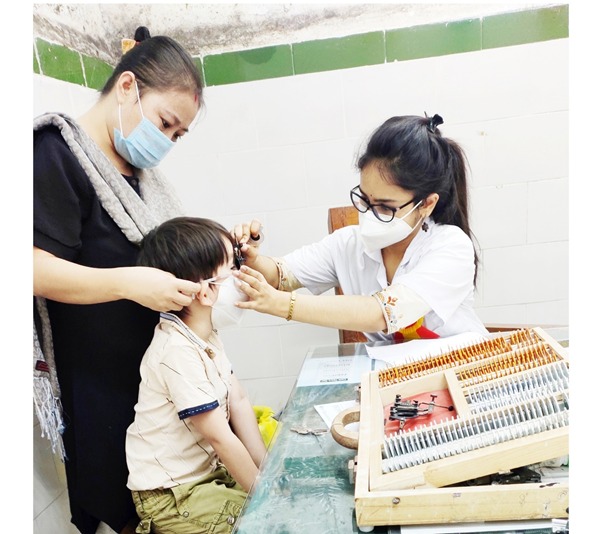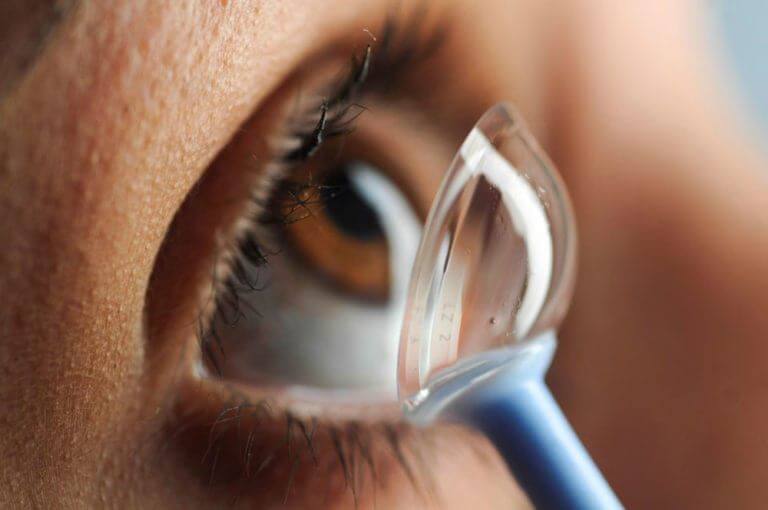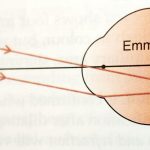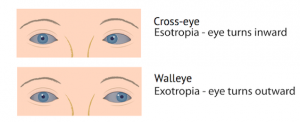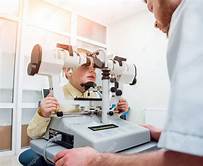Parents naturally wish to ensure the best for their children—good health, confidence and the opportunity to reach their full potential. While attention is often given to vaccinations and routine medical check-ups, eye health is frequently overlooked. Yet, annual eye examinations are essential for safeguarding not only a child’s vision but also their overall health and long-term quality of life.
Why Annual Eye Examinations Are Essential
1. Vision and Learning Are Closely Interconnected
Approximately 80% of learning in school is visual. Reading, writing and screen-based activities depend heavily on clear vision. Undetected vision problems may manifest as poor academic performance, inattention or behavioral concerns.
2. Children May Not Report Visual Difficulties
Many children adapt to poor vision and may not realize that what they see is abnormal. Regular eye examinations enable the early identification of undetected problems.
3. Early Detection of Ocular Conditions
Conditions such as amblyopia, strabismus and refractive errors (including myopia, hyperopia and astigmatism) can be effectively managed if diagnosed early. Delayed detection can lead to permanent visual impairment.
4. Impact of Digital Lifestyle on Myopia
Prolonged screen exposure and reduced outdoor activity have been strongly associated with the development and progression of myopia. Annual examinations allow monitoring of these risks and timely counseling.
Myopia: A Global Public Health Concern
Projected Burden by 2050
Evidence suggests that by 2050, nearly 50% of the world’s population (approximately 5 billion people) will be affected by myopia (1).
Why This Matters for Children
Childhood-onset myopia can progress throughout adolescence, increasing the risk of sight-threatening conditions in later life, including retinal detachment, glaucoma and myopic maculopathy.
What Parents Should Do
The most important preventive step is to ensure regular, annual eye examinations and timely visits to the nearest eye care practitioner if visual difficulties are suspected.
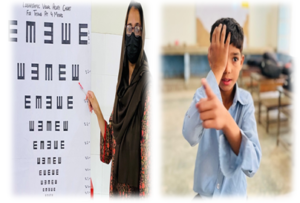
Glimpses from School Vision Screening – Faisalabad, Pakistan
Evidence-Based Guidance: The Myopia Navigator
The Myopia Navigator reflects internationally recognized, evidence-based guidelines that support practitioners in the management of childhood myopia. These guidelines are structured around three pillars of care: Mitigation, Measurement and Management Mitigation helps in creating awareness among parents regarding risk factors such as limited outdoor activity, prolonged near work and excessive screen use. This framework has been developed through the collaboration of the World Council of Optometry (WCO) and CooperVision, ensuring that optometrists worldwide follow standardized, evidence-based principles in myopia care (2).
Caring for Young Eyes: School Screenings by Optometrists in Faisalabad (Pakistan)
Optometrists serve as primary eye care providers and play a pivotal role in school vision screening programs, which are among the most effective tools for detecting vision problems at an early stage. In our recent study(3) conducted in Faisalabad schools (Jabbar M et al., 2025), involving 621 students aged 8–15 years, the following findings were observed (Figure).
Overall prevalence of myopia was 33.8%.
Private school students showed a significantly higher prevalence (46.6%) compared to public school students (26.1%), likely linked to more artificial lighting, greater digital device use and less outdoor activity.
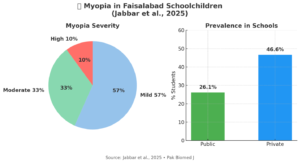
These findings highlight the urgent need for school-based screening programs, which not only identify children with refractive errors but also reveal how educational environments can influence visual health.
The Broader Role of Optometrists
Conduct school and community screening programs to identify children at risk.
Deliver comprehensive eye examinations and provide early diagnosis.
Refer appropriately for specialized care when required.
Educate parents and teachers on the importance of eye health, preventive measures and healthy visual habits.
Advocate for healthier school environments with balanced outdoor activities and appropriate use of digital learning tools.
“Optometrists are not only clinicians but also educators, advocates and guardians of children’s vision health”
Reference
1. Holden BA, Fricke TR, Wilson DA, Jong M, Naidoo KS, Sankaridurg P, Wong TY, Naduvilath TJ, Resnikoff S. Global prevalence of myopia and high myopia and temporal trends from 2000 through 2050. Ophthalmology. 2016 May 1;123(5):1036-42.
2. World Council of Optometry. Myopia Management Navigator: Mitigation [Internet]. Available from https://myopia.worldcouncilofoptometry.info/myopia- navigator/#mitigation
3. Jabbar M, Ahmed F, Rashid F, Siddiq S, Bhatti MM, Ihsan KM. Compare the Educational Environment and Prevalence of Myopia in Public and Private Schools: Educational Environment and Prevalence of Myopia. Pakistan BioMedical Journal. 2025 Apr 30:29–34. https://doi.org/10.54393/pbmj.v8i4.1233


